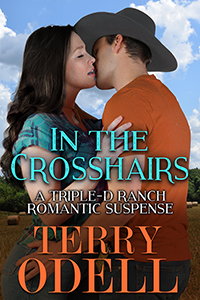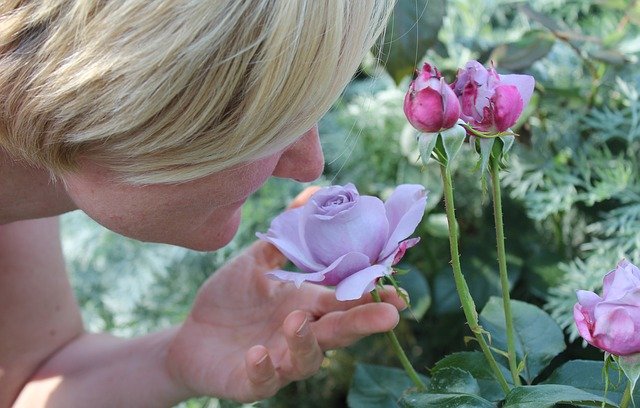The Nose Knows
Terry Odell
When we learned to write (and it’s an ongoing process, so I shouldn’t be using the past tense), we were told to pay attention to using the senses. Most of us focus on sight and sound, but there’s another sense that can bring additional life to your writing–the sense of smell. Sure, we might mention it if a character walks into a restaurant, or stumbles on a dead body, but otherwise, it’s frequently left out of our writing, or not utilized except in passing. Elaine did an excellent post about this several years ago, with excellent examples, but I thought the subject would be worth another visit.
Why is the sense of smell important? First, it’s another way for readers to connect to our characters. It’s also one of our most powerful senses. A brief detour into basic biology. I’ll spare you a lot of the technical talk, and cut right to the chase. If you’d like to delve deeper into the physiology, I’ll leave links at the end of this post.
The part of our brain that processes olfactory stimuli (smells) is closely connected to both memory and emotional centers. The other senses, like sight and sound, make a stop at the thalamus, which is the main relay station for the brain. From there, they go on to their processing centers. Not so the sense of smell. Scents go straight to the olfactory bulb, the brain’s smell center. This center is directly connected to the amygdala, the center for emotions, and the hippocampus, which plays a major role in memory. No, there’s not going to be a test, but this explains why a smell can trigger a detailed memory or a powerful emotion.
Okay, so there’s scientific documentation that smells are linked to memories and emotions. Any writing connections? Marcel Proust explored the phenomenon in Swann’s Way, wherein his character is transported to his childhood after savoring a madeleine cake soaked in tea. These memory/odor connections are referred to as the “Proust Phenomenon”—the ability of odors to cue autobiographical memories.
Many of us could stand to do more with the sense of smell in our writing.
Characters should not only be noticing smells, but they should be reacting to them as well. Detecting an odor could mean danger. Smoke waking them up at night. Food that doesn’t smell ‘right.’ A character’s scent memories can be a way to introduce back story, or move the plot forward.
A reminder, too, that sensory details shouldn’t be used like a laundry list. They need to mean something.
While I don’t pretend to have any remote similarities to Proust, I do try to include the sense of smell in my writing. They’re not deep, or ‘beautiful prose’, but they add to characterization, or move the story along.
Show, don’t tell, so here are a few examples from my own work.
From Finding Sarah, when the inevitable romance plot ‘black moment’ has separated Randy from Sarah. Throughout the book, he’s noticed the scent of her peach shampoo.
Randy spent the next few days wallowing in his own misery. Feeling like a first-class idiot, he’d even gone to Thriftway and bought a quart of Peach Blossom shampoo, only to pour it down the drain after using it once.
From Nowhere to Hide. We get a hint of the kind of taste Graham has from this snip:
Deputy Graham Harrigan sat at his computer in the Sheriff’s Office substation, the normal sounds of office activity fading to white noise as he hunted and pecked his way through the report he needed to file. As he’d told himself countless times, he should take a keyboarding class so he could get through the drudgery faster. The smell of stale, burnt coffee permeated the air, and he wished he’d taken a few minutes to stop at Starbucks.
And, from the same book, a look into Colleen’s past
Colleen jerked awake, drenched in sweat and tangled in the sheets. She sat up and fought the nausea as the memories came back, crystal clear and in freeze frame, like a slide show from hell.
A domestic dispute. By the book, she and Montoya using all the right phrases: “Yes, Mrs. Bradford. You don’t need the knife. Relax, Mr. Bradford. I’ll take the bat. Let’s sit down. Talk to me, Mr. Bradford.” The tension lifting.
Someone on the stairs. “You bastard! You’ll never hurt my mother again.” Kid, late teens at best. Brandishing a gun. Shooting. So much shooting. The noise. The smells. Gunpowder. Blood.
Our brains are wired to recognize unfamiliar smells. They also acclimate to prolonged exposure. My husband never noticed the smells he brought home after performing necropsies on marine mammals. One nick in his glove, and I knew it, but he was oblivious.
Check your current work for scent references. One way is to do a search on words such as odor, aroma, wafted, scent, smell.
Many of our scent memories relate to childhood because that’s when we experience them for the first time.
What scent memories do you have? For me, it’s the smell of birdseed. My great aunt and uncle had an egg ranch (which meant they raised chickens), and when we visited, we’d help feed the chickens. I’m transported back there every time we open a bag of birdseed.
My references for this post beyond my aging memory of physiology classes:
Why do smells trigger memories?
Here’s Why Smells Trigger Such Vivid Memories
Why Smells and Memories Are So Strongly Linked in Our Brains
What about your characters? How have you used the sense of smell to add depth or move the story? Examples welcome.
 Now available for pre-order. In the Crosshairs, Book 4 in my Triple-D Romantic Suspense series.
Now available for pre-order. In the Crosshairs, Book 4 in my Triple-D Romantic Suspense series.
Changing Your Life Won’t Make Things Easier
There’s more to ranch life than minding cattle. After his stint as an army Ranger, Frank Wembly loves the peaceful life as a cowboy. Financial advisor Kiera O’Leary sets off to pursue her dream of being a photographer until a car-meets-cow incident forces a shift in plans. Instead, she finds herself in the middle of a mystery, one with potentially deadly consequences.

Terry Odell is an award-winning author of Mystery and Romantic Suspense, although she prefers to think of them all as “Mysteries with Relationships.” Follow her on Facebook and Twitter.

